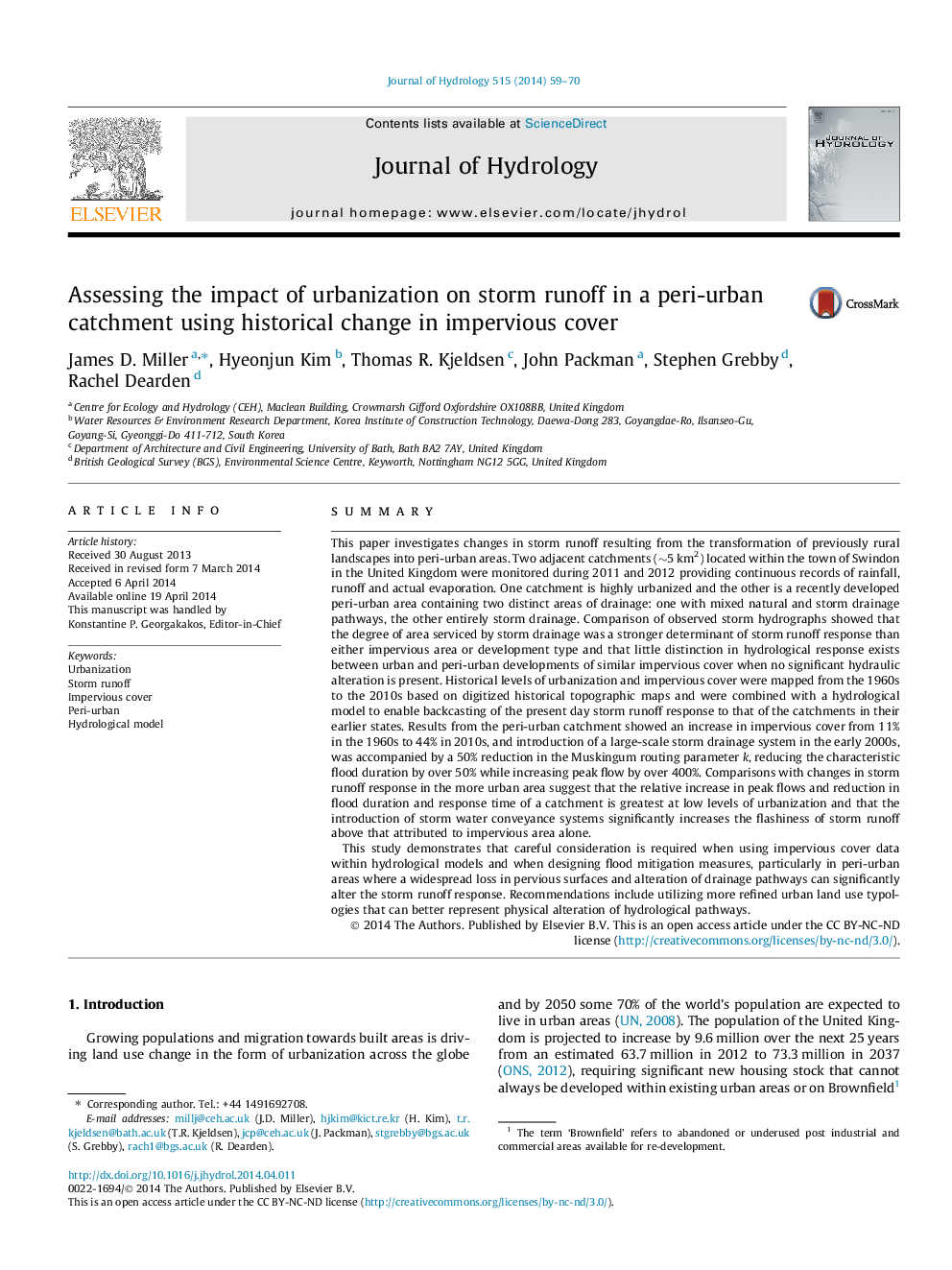| کد مقاله | کد نشریه | سال انتشار | مقاله انگلیسی | نسخه تمام متن |
|---|---|---|---|---|
| 6412826 | 1629933 | 2014 | 12 صفحه PDF | دانلود رایگان |
- Backcasting storm runoff response using novel method for generating historical LUC.
- Increased peak flow and reduced response time following peri-urban development.
- Attribution of flashy response using impervious cover plus storm drainage.
- Increased impervious cover has greater impact on rural peak flows than urban.
- Drainage more important determinant of storm response than land use type.
SummaryThis paper investigates changes in storm runoff resulting from the transformation of previously rural landscapes into peri-urban areas. Two adjacent catchments (â¼5Â km2) located within the town of Swindon in the United Kingdom were monitored during 2011 and 2012 providing continuous records of rainfall, runoff and actual evaporation. One catchment is highly urbanized and the other is a recently developed peri-urban area containing two distinct areas of drainage: one with mixed natural and storm drainage pathways, the other entirely storm drainage. Comparison of observed storm hydrographs showed that the degree of area serviced by storm drainage was a stronger determinant of storm runoff response than either impervious area or development type and that little distinction in hydrological response exists between urban and peri-urban developments of similar impervious cover when no significant hydraulic alteration is present. Historical levels of urbanization and impervious cover were mapped from the 1960s to the 2010s based on digitized historical topographic maps and were combined with a hydrological model to enable backcasting of the present day storm runoff response to that of the catchments in their earlier states. Results from the peri-urban catchment showed an increase in impervious cover from 11% in the 1960s to 44% in 2010s, and introduction of a large-scale storm drainage system in the early 2000s, was accompanied by a 50% reduction in the Muskingum routing parameter k, reducing the characteristic flood duration by over 50% while increasing peak flow by over 400%. Comparisons with changes in storm runoff response in the more urban area suggest that the relative increase in peak flows and reduction in flood duration and response time of a catchment is greatest at low levels of urbanization and that the introduction of storm water conveyance systems significantly increases the flashiness of storm runoff above that attributed to impervious area alone.This study demonstrates that careful consideration is required when using impervious cover data within hydrological models and when designing flood mitigation measures, particularly in peri-urban areas where a widespread loss in pervious surfaces and alteration of drainage pathways can significantly alter the storm runoff response. Recommendations include utilizing more refined urban land use typologies that can better represent physical alteration of hydrological pathways.
Journal: Journal of Hydrology - Volume 515, 16 July 2014, Pages 59-70
